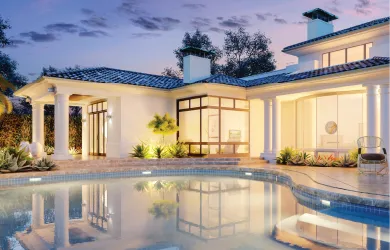- Our Story
- Our Impact
-
Our Projects
Residential
Commercial
- Careers
The Interplay of Infrastructure and Real Estate - Shaping the Future
By LODHA
September 15, 2023The Indian real estate sector has embarked on a transformative journey that reflects the nation's transition from a predominantly agrarian society to one of the world's fastest-growing economies. This remarkable evolution, marked by skyscrapers, sprawling townships and bustling commercial centres, is intrinsically tied to the infrastructure development that spans the country. The growth of these two sectors not only shapes the physical landscape of the country but also influences its economic and social fabric.
For potential home buyers in India, the pursuit of their dream home is not merely an isolated transaction, but an exploration of a deeply interconnected web that weaves together these two vital aspects, shaping the very essence of what a 'home' represents. These discerning individuals are not just seeking four walls and a roof; they aspire to be part of a thriving community, with access to well-planned infrastructure that ensures convenience, connectivity and an improved quality of life.
In this article, we will explore the real estate sector's significance in India's economy and its intricate ties to growth shedding light on how the interplay of infrastructure and real estate shapes cities and the national economy while offering a promising future narrative.
Infrastructure Development as a Catalyst for Real Estate Growth
Infrastructure development serves as a catalyst for real estate growth, fundamentally transforming regions by enhancing connectivity, reducing commute times and elevating the standard of living. Well-planned transportation networks, such as highways, railways and airways not only attract investments and businesses but also stimulate increased demand for commercial and residential properties. This synergy fosters economic growth, generates employment opportunities and leads to the emergence of new real estate hotspots while creating a virtuous cycle that shapes the nation's urban landscape and economic prosperity.
The Intersection of Infrastructure and Real Estate in Mumbai
Transitioning to the landscape of Mumbai, a city synonymous with its stunning skyline, bustling streets and vibrant culture stands as a testament to India's economic prowess and urban dynamism. Yet, beneath its glittering façade lies a fascinating story of transformation, driven by the interplay of infrastructure development and the real estate sector.
The transportation networks here serve a pivotal role in influencing real estate demand and property values, leading to a noticeable appreciation in real estate prices. The proximity to vital transportation hubs such as airports, well-constructed highways and efficient metro stations becomes an influential factor for both homebuyers and businesses searching for strategically advantageous locations within the city. Additionally, improved transportation infrastructure stimulates the development of satellite towns and suburban areas, relieving the burden on overcrowded urban centres.
The expansion and modernization of the suburban railway network have not only improved connectivity but also spurred real estate development near railway stations, enhancing property values. The Ghatkopar-Andheri metro line revolutionized Mumbai's commuter experience by connecting the Eastern and Western suburbs, offering a swift and reliable mode of transportation. Iconic projects like the Bandra-Worli Sea Link have indeed been instrumental in reducing travel times, thereby enhancing the appeal of areas like Worli and Bandra for real estate investments. The improved connectivity offered by this engineering marvel has not only elevated property values but has also revitalized these neighbourhoods, turning them into prime real estate destinations.
Looking forward, the future for real estate in Mumbai and its surrounding regions seems even more promising. The upcoming Mahasamrudhi Mahamarg, set to establish a high-speed expressway connecting Mumbai and Nagpur, is poised to unlock vast potential for real estate growth along its route. Furthermore, the Navi Mumbai airport will enhance connectivity and drive economic development in the region, while the Trans Harbour Link will improve connectivity between Navi Mumbai and Mumbai. The Coastal Road Project will bring benefits to all the areas along its path, spanning from South Mumbai to Kandivali. In addition, the Bullet Train Project will establish a connection between Mumbai and Ahmedabad and stimulate economic activities. The extensive expansion of Metro Lines will not only ease commuting and reduce traffic congestion but also improve accessibility to previously remote areas, rendering them more appealing for both residential and commercial investments.
Moreover, the integrated townships and mixed-use developments are driving transformative infrastructural changes. Integrated townships like Palava, Upper Thane and Lodha New Cuffe Parade showcase how strategic planning and world-class amenities create self-contained microcosms that attract investors and residents. This intricate relationship epitomizes a symbiotic synergy, propelling both sectors and fostering a sustainable urban ecosystem.
This close relationship between infrastructure and real estate is driving India's urban transformation. This synergy has not only transformed the physical landscape of cities like Mumbai but also fueled economic growth, created employment opportunities, and elevated the lives of residents. As India continues to develop, this partnership promises a brighter future with well-planned cities and thriving communities.
You may also like



 Enquire
Enquire
 Call
Call
 chat
chat
 Search
Search




